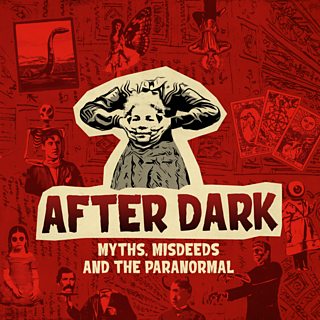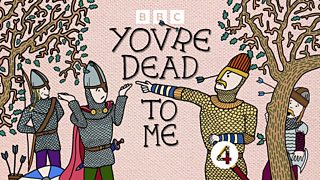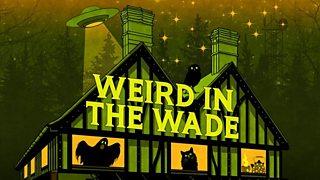The Mysterious World of Welsh Myth and Legend
Discover the stories behind some of Wales’ most beloved folk tales and customs.
Listen to After Dark: Myths, Misdeeds & the Paranormal on ÃÛÑ¿´«Ã½ Sounds.
Wales is set apart from a lot of countries, with one of its folk tales - the red dragon - featuring in its flag. So where does the myth come from? And what about its other dark folk tales and traditions, such as the hounds of the underworld and the Mari Lwyd?
In this episode of After Dark: Myths, Misdeeds & the Paranormal, Anthony Delaney and Maddy Pelling are joined by Russ Williams, author of Where the Folk: A Welsh Folklore Road Trip. Here are just some of the things we learned about Welsh folklore from their conversation.
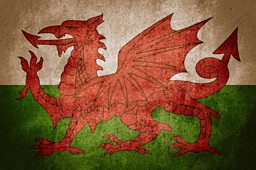
Wales’ central myth is a tale of two dragons.
The red dragon, Y Ddraig Goch, that we see depicted on the Welsh flag dates back to the fifth century. The legend goes that King Vortigern sought to build a fortress atop a hill called Dinas Emrys, but with each attempt the foundations crumbled.
A young boy believed to be Merlin, the magician from the legend of King Arthur, revealed the true cause of the king's woes Beneath the hill: in an underground lake slept two dragons: one red, the symbol of the native Britons; and one white, that of the invading Saxons. The disruption above had awoken the two dragons who engaged in a fierce battle, where despite the white dragon's dominance, the red dragon emerged victorious. This legend went on to evolve into a symbol of Welsh resistance and pride.
… But this tale is something of a sequel.
As Russ Williams puts it, the story of the dragons, chronicled by Gerald of Wales, has been simplified over the years as it has been passed down the generations. “There's nothing in the story whatsoever that says, ‘and that is why we have the red dragon as our flag’”, he says. “People, for whatever reason, have picked that tale – but the two dragons featured in the Mabinogion, which came about years before [Gerald of Wales’ story].”
The Mabinogion is essentially Wales’ version of the Greek myths.
“The Mabinogion are the OG Welsh tales, if you will,” says Russ. “They were written down around the 1350s, but they existed as oral tales for years before that. They are rooted in British history, with real historical figures thrown in, and they very much still dominate Welsh folklore.”
Many Welsh folk stories that came after the Mabinogion weren’t Welsh in origin. While the Mabinogion is “as Welsh as you can get”, Russ says, many other folk stories were brought over to the country by either invaders or people who heard them in other countries.
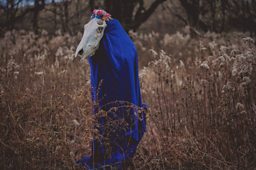
All folk tales evolve over time.
For example, details of a plot might change to reflect societal changes, such as in the famous Arthurian legend of the Lady of the Lake. As Russ paraphrases: “Essentially, a mortal man falls in love with a fairy woman and she gives him three opportunities. She'll say, ‘if you hit me three times, then it's all over’ – but you notice as the years progress, her phrase ‘hit me’ changes to ‘lie to me’, or similar. So you can see the societal changes.”
Another animal associated with Wales is the Cŵn Annwn – or hound of the Underworld.
These spectral hounds come from Annwn, the Welsh underworld, and are described as having white fur and pointy, pink ears. Some stories about them differ, Russ says. Some say they foretell doom or death, “whereas later stories would say that the kings of the Otherworld would head out of the Otherworld and their dogs would chase after people to collect their souls. The Mabinogion begins with a Cŵn Annwn, when a mortal man comes across a dead stag surrounded by the Cŵn Annwn. He shoos the dogs away, takes the stag home for himself, and the next day, he gets a knock on the door by the king of the otherworld, Arawn, who tells him: that was my dog's kill, and you now owe me.”
The Mari Lwyd is one of Wales’ oldest folk traditions.
As Russ explains, it’s a wassailing tradition that takes place around Christmas time, where people in the community visit each other’s houses in costume.
“They believe it started as a way for poorer people to have their own feast during Christmas time. There’s a band of them carrying a horse's skull draped in ribbons and a cloak. There are also other characters and musicians, and they'll knock on doors in their village, challenging the people on the inside to what is essentially a Welsh battle of rhymes. The person on the other side will rhyme back, saying why they should not come in. If Mari Lwyd wins, then she gains access to the house, and they're given some beer and some food, and then they move on to the next house.”
What other tales will you learn about? You can find out more about Welsh folklore on After Dark: Myths, Misdeeds & the Paranormal on ÃÛÑ¿´«Ã½ Sounds.
-
![]()
Betwixt The Sheets
Sex historian Kate Lister uncovers stories that’d make your history teacher blush.
-
![]()
You're Dead to Me
Greg Jenner brings together the best names in comedy and history to learn and laugh about the past.
-
![]()
Weird in the Wade
Weird in the Wade brings you true tales that are weird, wonderful and a little off kilter.
-
![]()
Uncanny
From ghostly phantoms to UFOs, Danny Robins investigates real-life stories of paranormal encounters.
